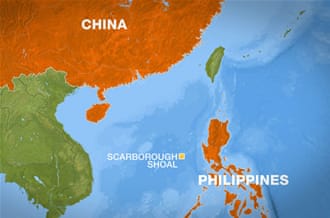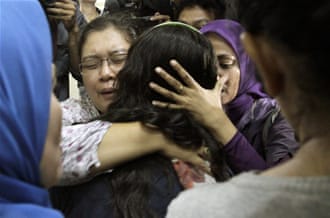
OTTAWA/EDMONTON, May 9 - The government of Alberta released a study into the extra carbon emitted by crude produced using oil sands instead of more conventional sources. The study, by a unit of California-based Jacobs Engineering Group, found that emissions from oil-sand crude are just 12 percent higher than from regular crude. But the report was not just about the science. It also sent a political signal to Europe: Canada's fight over oil sands is not done yet.
As part its ambitious efforts to cut carbon emissions, the European Union has proposed classifying crude produced from oil sands, or tar sands as environmentalists and others call them, as much dirtier than other fuels.
A 2011 study for the EU by Stanford University academic Adam Brandt found that oil-sand crude was as much as 22 percent more carbon intensive.
Canada, whose oil sands have helped it become an energy power, fears such a ruling could imperil a resource it estimates will add more than C$3 trillion to its economy over the next 25 years.
Which is why Ottawa has waged a concerted lobbying campaign against Brussels' proposal over the past three years. An examination of hundreds of pages of documents obtained under access to information legislation in both Brussels and Ottawa, some dating back to 2009, as well as interviews with leading officials in both Canada and Europe show just how extensive that effort has been.
The governments of Canada and Alberta, along with Canadian companies, have wooed dozens of European parliamentarians, offered trips to Alberta and sponsored conferences in an effort that Chris Davies, a British Liberal Member of the European Parliament and a backer of the EU proposal, said "has been stunning in its intensity."
Satu Hassi, a Finnish MEP for the Greens and another backer of the EU proposal, said the thing that sets Canada's campaign apart is not its size but its official backing. "There have been massive lobbying campaigns by the car industry, by the chemicals industry, banks, food giants, etc. But so far I have not seen such a lobbying campaign by any state."
Perhaps the most surprising thing about the campaign is that virtually no fuel from Canadian oil sands reaches European refineries. Ottawa's fear is that a European ruling will influence other markets, including the United States, where Canada currently sends virtually all its oil.
"We don't want the potential stigmatization and we're quite concerned about that issue," Canada's Natural Resources Minister Joe Oliver told Reuters late last year.
"A GROWING REPUTATIONAL PROBLEM"
Canada's battle with the EU began in 2009 when Europe - the largest economic market in the world - agreed to adopt a measure called the Fuel Quality Directive to reduce the level of greenhouse gases emitted by vehicles.
Brussels has still not agreed precisely how that will be achieved, but in 2009 the Commission published findings that tar sands might have a greenhouse gas intensity around one-fifth higher than conventional crude.
Nearly all the massive reserves of oil concentrated in the northern part of Canada's Alberta province - home to the world's third largest proven reserves of crude after Saudi Arabia and Venezuela - are in the form of tar sands.
The clay-like sands have to be dug up in open-pit mines with massive shovels, or blasted with steam and pumped to the surface, before oil can be extracted. The process means the oil costs more to produce than regular crude, uses more water and energy, and emits more carbon.
As Canada has developed its sands - the industry in Alberta grew from 603,000 barrels a day in 2000 to 1.6 million in 2011 - environmentalists and non-governmental organizations have stepped up campaigning against the resource.
Canada's Conservative government - which touts Canada as a "clean energy superpower" - counters that it needs to defend itself against lies and unwarranted discrimination against the tar sands.
Emails from Canadian diplomats and other documents show Canada feared negative publicity could hit tens of billions of dollars of investment in its industry by such European majors as Royal Dutch Shell, BP, France's Total and Norway's Statoil.
"The oil sands are posing a growing reputational problem, with the oil sands defining the Canadian brand," London-based Canadian diplomat Sushma Gera wrote in a confidential e-mail on August 20, 2010, which like many of the documents acquired through Freedom of Information legislation has been redacted. "With (a) recent increase in the NGO campaigns targeting (the European) public, we anticipate increased risk to Canadian interests much beyond the oil sands."
In late 2009, Ottawa set up a body it called the Pan-European Oil Sands Team, which included diplomats from embassies in London, Paris, Berlin, The Hague, Oslo, Brussels and Canada. It also included representatives from the environment and natural resources ministries, the Alberta provincial government, and oil companies including Shell, Statoil and Total.
Officials from the London-based Royal Bank of Scotland - a UK state-owned bank - and the Canadian Association of Petroleum Producers (CAPP), an energy industry group, rounded out the roster.
"The principal objective of the Oil Sands Team is to reframe the European debate on oil sands in a manner that protects and advances Canadian interests related to the oil sands and broader Canadian interests in Europe," wrote one diplomat in a "Pan-European Oil Sands Advocacy Strategy" document dated May 2011.
"AT LEAST IT'S NOT BLOODY"
A few months after its launch, the team reported "a resurgence of highly critical public campaigns" in Europe which it expected to intensify.
"In order to counter these negative campaigns and media coverage we will have to be proactive but strategic and coherent in our approach. This will require significant resources," said one document.
CAPP, whose members are a Who's Who of the Canadian energy sector, provided C$30,000 for a conference on "New Energy Frontiers" in June 2011 in Britain. Ottawa and Alberta each contributed C$20,000.
Canada and Alberta also arranged a series of visits to the tar sand fields for European decision-makers, legislators and think-tanks. Much of the campaigning was done in Brussels and European capitals, with officials from Ottawa and Alberta meeting, phoning and writing to MEPS.
Friends of the Earth, an environmental group, used internal EU documents to calculate that between late September 2009 and late May 2011, Canadian officials and diplomats talked to their European counterparts at least 105 times.
In August 2010, the Pan-European Oil Sands team reported: "Oslo holds regular meetings with Statoil to update on each others' activities and coordinate where appropriate. (The) Hague is enhancing its engagement with the private sector and met with Shell recently. Paris has regular meetings with Total ... London is also in regular contact with the private sector including meetings with Shell, BP and Royal Bank of Scotland as well as Canadian oil companies."
Lars Christian Bacher, president of Canadian operations for Statoil, told Reuters he conducted as many as 50 tours of the company's Leismer oil sands site in 2011, most of them for European officials and media.
Last November, Norway's energy minister, Ola Borten Moe, a one-time critic of the oil sands, visited the site and said he was impressed by industry efforts to improve its environmental record.
"People see what it is and what it's all about, and sometimes what it's not all about. Then we can have a more factual-based debate around the dilemmas of oil sands, because we know that there are dilemmas," Bacher said. "But that's nothing different from any other kind of industrial activity."
The oil sands team also noted that Canadian Prime Minister Stephen Harper met Total's chief executive Christophe de Margerie during an official visit to Paris in June 2010. A spokesman for Harper said the two men had participated in a business roundtable but declined to give more details.
"The lobbying from Canada and from Alberta is quite impressive. They have been really active for the last few years, organizing lots of meetings and presentations," said one well-placed European Union source.
Yet for all the effort, Canada's campaign ran into two problems in late 2011. Firstly, the EU's executive Commission decided in October to ignore Canadian pressure and rule that tar sands crude was much dirtier than regular oil.
Soon after, in December, Canada's Environment Minister Peter Kent abruptly announced that the country would pull out of the Kyoto Protocol, which is the first global attempt to slow carbon emissions and is much cherished in many parts of Europe.
Canada said it had to withdraw from Kyoto to avoid being hit by penalties for failing to stick to targets for cutting greenhouse gas emissions.
Kent, a former television news anchor who was appointed environment minister in early 2011, immediately pushed the idea that "ethical oil" from Canada is far preferable to crude from OPEC nations with dubious human rights records.
A message from Britain's high commission (embassy) in Ottawa on January 7, 2011 summarized Kent's message as: "it may be dirty oil, but at least it's not bloody oil".
"WASN'T MY APPROACH"
That approach ended after Oliver, a sprightly former investment banker who will turn 72 next week, took over the Natural Resources portfolio last May.
Oliver has told Reuters that promoting the idea of ethical oil "wasn't my approach", and has instead hailed the benefits of oil sands to Canada's economy.
He has branded environmentalists who oppose oil sands and pipeline projects "radicals" bent on limiting economic growth, and in April angered green groups by taking final decision-making powers on big projects away from regulators and handing them to his own government.
Last year, he sent a letter to European officials implying that if Europe pressed ahead with tagging tar sands dirtier, Canada would take its case to the World Trade Organization.
Many in Brussels were livid.
"You can't take Europe to court for treating oil sands correctly," said Sven-Olov Ericson, a senior energy official at Sweden's Ministry of Enterprise, Energy and Communications who has been lobbied by Canadian and industry officials.
THE VOTE
Scientific experts from the EU's 27 member states finally gathered to vote on their tar sands proposal in February. But the group was divided: 12 nations voted for, eight against and seven - including heavyweights Germany, Britain and France - abstained. Because of complex voting procedures weighted to reflect population, the outcome was a stalemate.
British officials said the desire to help Canada was offset by worries about tensions between members of the country's coalition government.
EU Climate Commissioner Connie Hedegaard, the most prominent champion of classifying oil sands as a heavy polluter, said that Ottawa's lobbying campaign had made her fear the proposal would be defeated altogether.
Canada has now demanded more research into the validity of the proposal. A letter sent by Oliver on March 22 to European ministers said Ottawa remained "firmly opposed" to the Commission's proposal because it made "an unfair distinction between crude from tar sands and other sources of crude".
Brussels says it will study the impacts of its proposal and won't decide anything until next year.
"When the world and these environmental groups are fundamentally opposed to something that is in the Canadian national interest, I believe that the government has an obligation to stand up and say, 'Hey you're wrong,'" TransCanada Chief Executive Russ Girling told Reuters in late 2011.
Minister Oliver agrees. "We hear a lot from environmental groups, and that's fine, and we should hear from oil companies and from others who may be able to bring some facts to the table and who have interests," he said.






